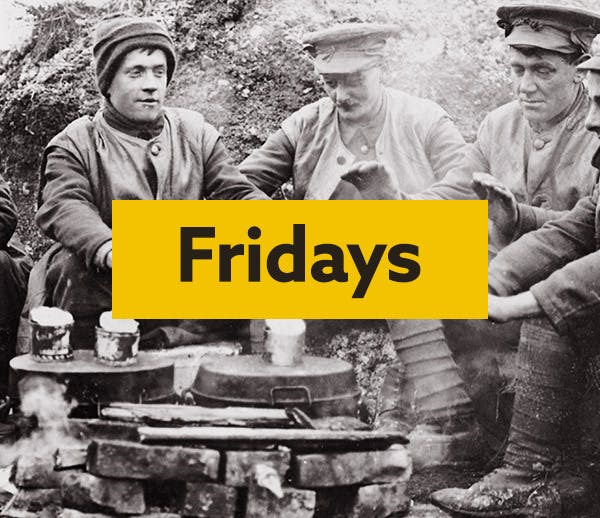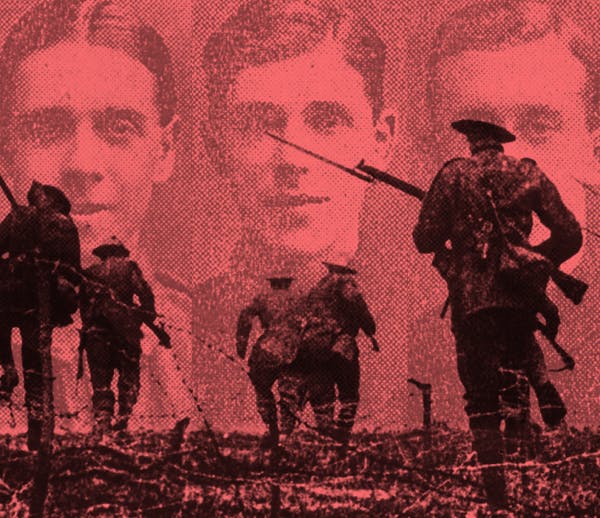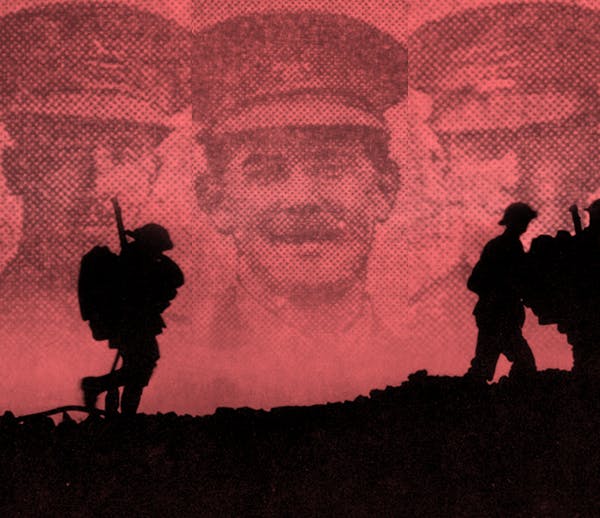Find Pals in your family
A city's promise and its price: The story of the Liverpool Pals
6-7 minute read
By Jen Baldwin | November 6, 2025
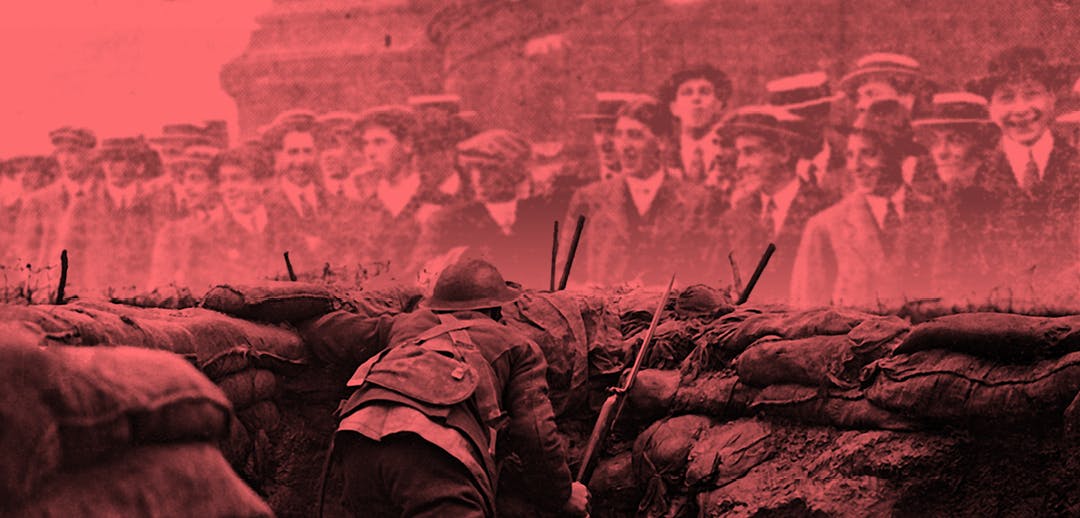
From Caernarfon to Cambridge, from Glasgow to Grimsby, the comrades who answered Kitchener's call soon found themselves shoulder-to-shoulder in trenches thick with mud. But stories of the Pals battalions remain scattered. Join us as we delve into the tale of the Liverpool Pals.
When the First World War was declared in August 1914, Liverpool answered the call like few other cities in Britain. Crowds filled the square outside St George’s Hall, banners flapped in the late-summer wind, and Lord Derby’s voice carried across the steps: “Come along, boys — enlist together, train together, fight together.”
Within days, the idea of the Liverpool Pals had caught fire. By the end of the month, so many men had come forward that even the newspapers struggled to keep up. Quoted in the Liverpool Echo, Lord Derby said:
"Only half an hour has elapsed, and recruits to the extent of more than a full battalion have arrived."
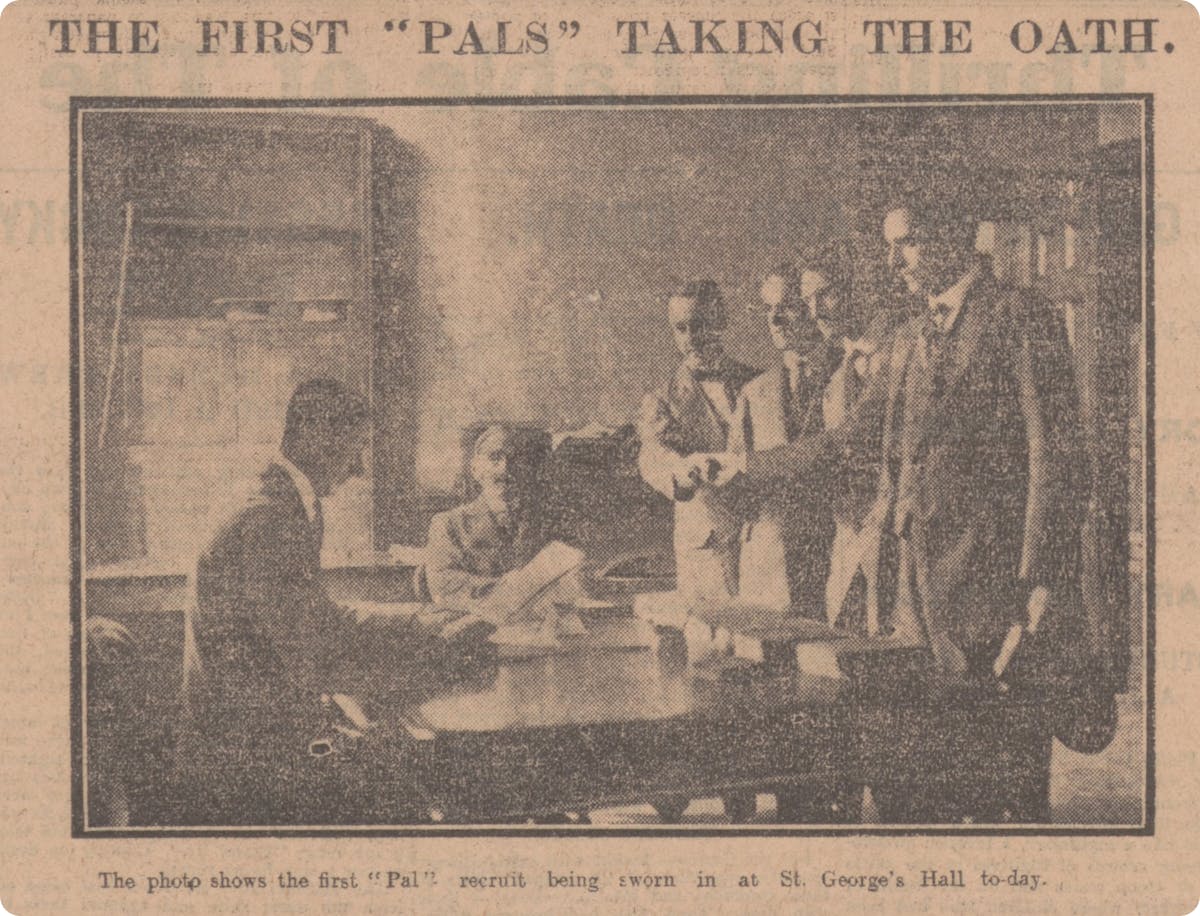
The first Pals recruits, pictured in the Liverpool Echo, 31 August 1914.
And thus, the first Pals battalion was born. The initiative was so successful that it spread far and wide across Britain.
A city on the march
The Pals battalion concept was simple and devastatingly effective. Instead of recruiting strangers, men enlisted alongside their friends, neighbors, and co-workers. Pride, loyalty, and camaraderie drew them in droves.

An article commenting on the success of the Pals scheme, in the Liverpool Echo, 29 August 1914.
Liverpool’s response was overwhelming. Entire offices, shipping firms, and warehouse floors had emptied. Clerks and dockworkers alike joined what became the 17th to 20th (Service) Battalions of The King’s (Liverpool Regiment) — “Liverpool’s Own.”
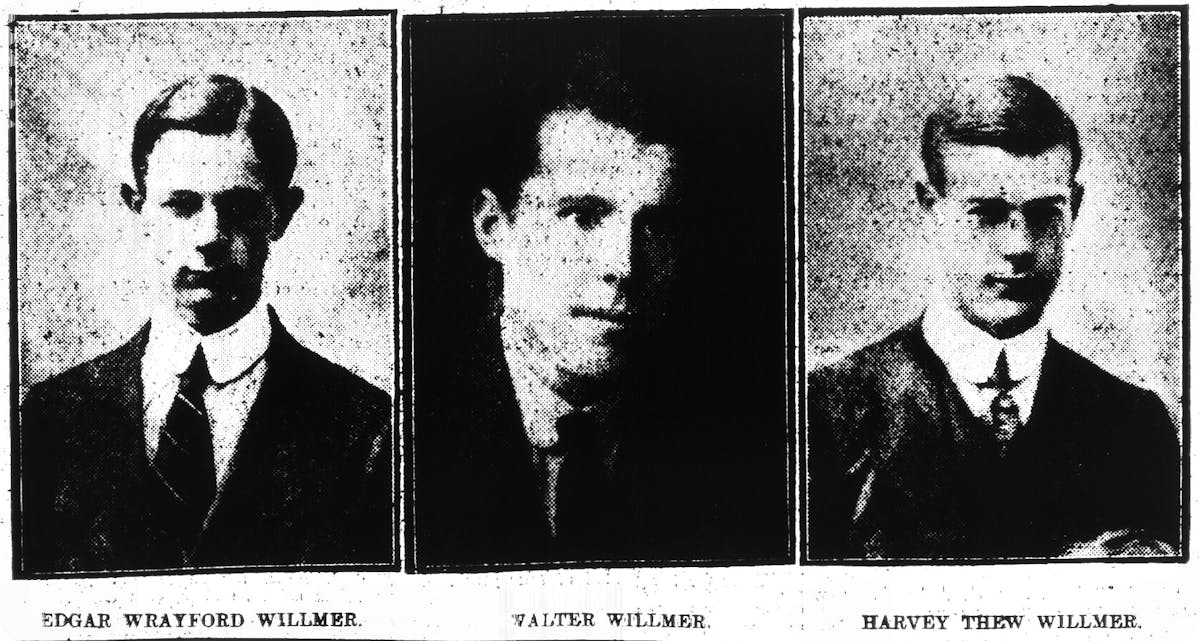
Harvey and Wrayford Willmer both joined the Liverpool Pals in 1914, along with their cousin, Walter, pictured in the Birkenhead News, 12 September 1914.
Training began in borrowed spaces: Prescot’s disused watch factory, the Earl of Derby’s estate at Knowsley Park, and later, the chalky expanses of Salisbury Plain. They marched through the fall rain singing “Tipperary,” proud of their city and their shared purpose.
"Lord Derby’s scheme for a battalion of Liverpool business and professional men has succeeded beyond belief. It is especially intended to be a ‘pal’s battalion,’ composed of men who have worked together in business in this city."
The scheme would have devastating consequences for Liverpool.
Clerks became soldiers
Liverpool’s civic pride was on full display as men rushed to enlist. The Echo reported that 90 men came from the Stock Exchange alone, and a contingent from Port Sunlight, “marched amid many signs of popular approbation.”
"The actual numbers fully enlisted up to last night were 1,287. About a thousand more are to be enlisted to-day."
Men queued from dawn until the recruiting serjeants’ voices gave out. Lord Derby himself arrived early at St George’s Hall to thank the latest batch of recruits — most of them clerks, shipping agents, and office boys swapping pen for rifle.
Find Pals in your family tree
The newspapers called them “Liverpool Comrades.” Photographs showed young men in flat caps and straw boaters, their smiles still boyish, their enthusiasm undimmed by what lay ahead.

Men becoming 'Liverpool Comrades', pictured in the Liverpool Weekly Courier, 5 September 1914.
All that mattered was that they were doing their city and country proud, side by side.
The Kitchen twins of Toxteth
Among those young men were John Harold Kitchen — known as Harold — and his twin brother Joseph Percy Kitchen.
Born on 3 July 1895 in Toxteth, they were the sons of Joseph Farrer Kitchen, a shipping clerk, and Annie Kitchen (née Povah). The family lived at 43 Jermyn Street, a narrow terrace close to the river, where the smell of salt and tar drifted through the windows.
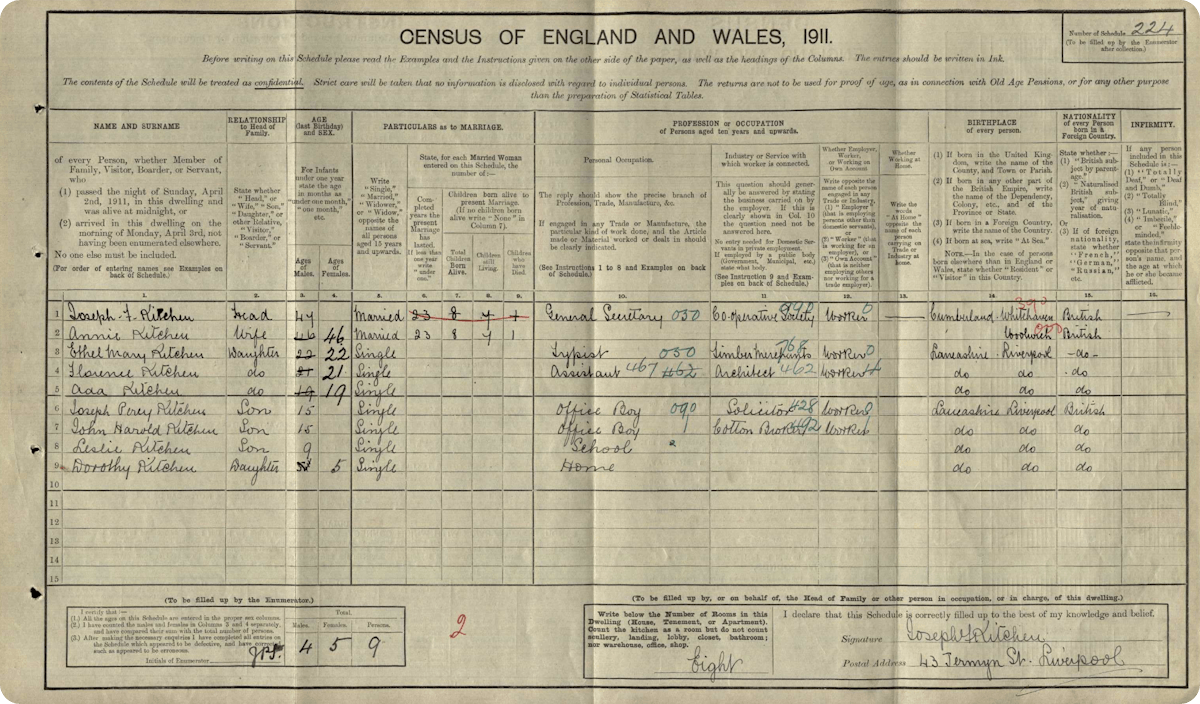
The Kitchen family in Liverpool in the 1911 Census.
The twins were inseparable. By 1911 both worked as clerks in Liverpool’s bustling mercantile offices; a city that thrummed with trade and possibility. When Lord Derby called for recruits, we can picture them walking together to St George’s Hall and enlisting side by side into the 18th (Service) Battalion, The King’s (Liverpool Regiment).
Their mother Annie had died earlier that year. Their father signed the enlistment forms for his sons — twins who would march away as one.
Life in the Pals
The 18th Liverpool Pals trained through the winter at Prescot Watch Factory and Knowsley Park before moving south to Larkhill, where the sound of artillery practise echoed across the plain. In November 1915, they crossed the Channel to France.
Within weeks, they were facing the grim reality of trench life — freezing nights, lice, and the constant rumble of shellfire. You can imagine their letters home — steady words of reassurance, perhaps, touched with the same humor that had carried them through training.
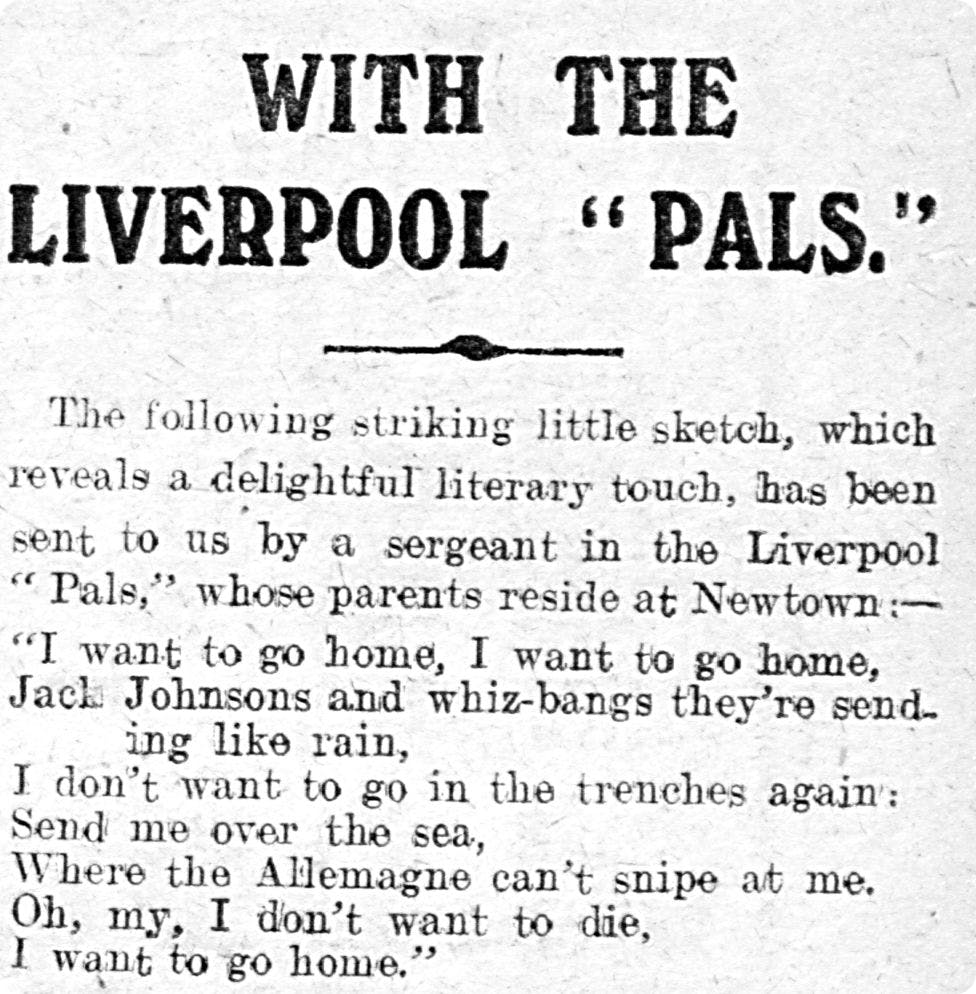
A striking poem from the St. Helens Newspaper & Advertiser, 23 June 1916.
Tragedy would soon strike. Private Harold Kitchen was killed in action on 28 January 1916. The war diaries do not offer a specific event or act; a trench raid near Maricourt, perhaps, or shellfire along the Somme front. He was twenty years old.
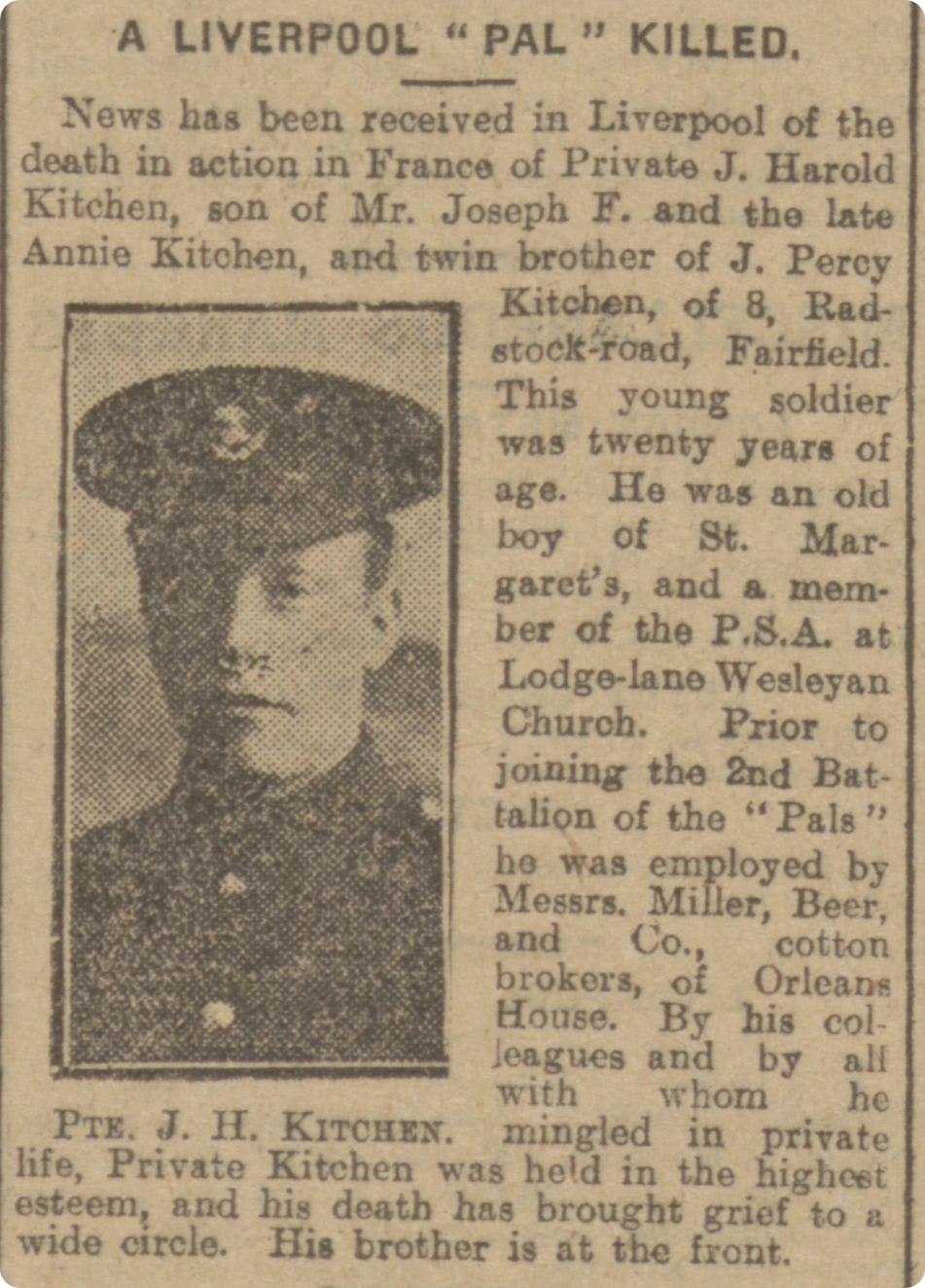
Harold's death was reported in the Liverpool Echo, 4 February 1916.
Just five months later, on 1 July 1916 — the first day of the Battle of the Somme — Private Percy Kitchen fell while serving with the same battalion. The Liverpool Pals were among the few units to take their objectives near Montauban that day, but at a terrible cost.
Two brothers, twins who had joined together, were now buried in different corners of France.

The death of the twins was announced in the Liverpool Echo, 19 July 1916.
In Toxteth, neighbors on Radstock Road likely gathered quietly at the Kitchen door; black crepe appeared on the window. For their father Joseph, the war had taken everything. His wife gone, his sons lost within months of each other, he was left with the echo of their laughter and the pride of their service, the 1921 Census reading like a roll call of the absent.
Across Liverpool, similar stories unfolded in every district — Walton, Garston, Everton, and Kirkdale. The promise that men could “serve with their friends” became the city’s shared heartbreak.
Today, the Kitchen brothers’ names are carved into the city’s rolls of honor. Harold lies in Maricourt Military Cemetery; Percy rests in Dantzig Alley British Cemetery, Mametz.
Their story lives on through records that have survived — census returns showing the family at 43 Jermyn Street, military service files, casualty registers, and the Liverpool Echo’s solemn lists of the fallen.
The legacy of the Liverpool Pals
The Liverpool Pals went on to fight at Arras, Ypres, and in the final Hundred Days campaign of 1918. Few of the original volunteers were still standing by the Armistice. Yet the spirit of those early days — the sense that ordinary people could unite for a shared purpose — endured. After the war, survivors formed the Liverpool Pals Association, ensuring their comrades’ names would never be forgotten.
St George’s Hall, where recruitment began, became a place of remembrance. Every 1 July, wreaths are laid for the battalions that marched from its steps to the Somme.
In Toxteth, life carried on. Children played in the streets where the Kitchen twins had grown up; ships came and went on the Mersey; the city rebuilt itself through grief.
But if you stand before the war memorial today and read the names carefully, you will find two that sit side by side.
Two brothers, two lives intertwined, forever Liverpool’s Own.
Thank you to our community members in the Findmypast Family History Forum, who suggested which Pals battalions we should explore. Now you've read the story of the Liverpool Pals, you can delve deeper into the tales of the Bradford Pals and the Grimsby Chums.


